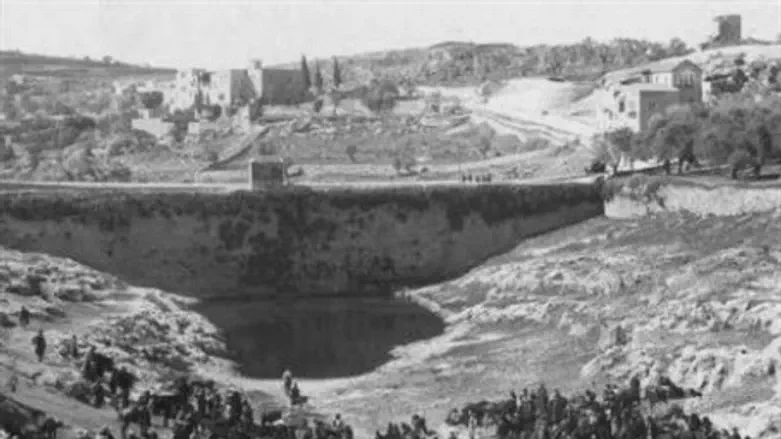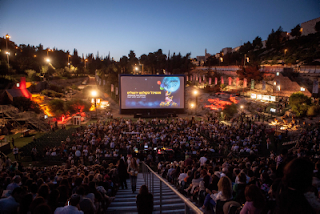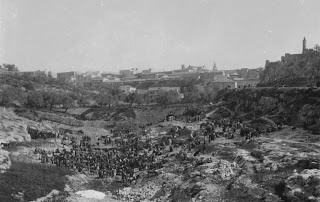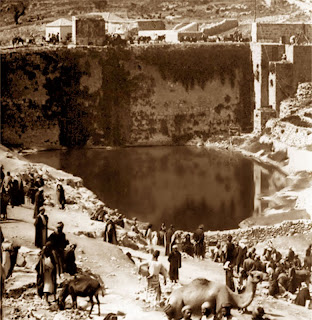
The archives at the University of California - Riverside contains this picture, but clearly the caption "Mount Tabor" was wrong.
This is a picture of "Gei Ben Hinnom"(the Hinnom Valley) in Jerusalem, beneath the walls of the Old City.
Today, few residents or tourists know about the history of the area called "Breichat HaSultan (the Sultan's Pool), except for the occasional concert in the amphitheater.
As we researched the picture, however, we discovered that the pool and cattle market were the frequent focus of photographers a century ago.
The Hinom Valley - Breichat HaSultan amphitheater today (Go Jerusalem)
The Valley of Ben-Hinnom is mentioned repeatedly in the Bible, serving as a border between tribes of Judah and Benjamin.
From biblical times it had an infamous reputation as the site of human sacrifices to Molech. The evil perpetrated there made the name "Gei Hinnom," or Gehenna, synonymous with Hell.
A dam was built across the valley, possibly at the time of the Second Temple, with a road on top that passed between Mt. Zion and the opposite hill (eventually Mishkenot Hasha'ananim). The reservoir created by the dam measured 169 meters by 67meters, with a depth of 12 meters. The road became one of the principle routes to Jerusalem from the south. Suleiman the Magnificent built a sabil fountain on the dam, and it still exists today.
After the 1948 war between Israel and its Arab neighbors, and until the 1967 Six Day War, the valley was a desolate no-man's zone between Jordan and Israel.
Photo of the Hinom Valley cattle market taken from the dam (Credit: Keystone-Mast Collection, California Museum of Photography at UCR ARTSblock, University of California, Riverside)
Suleiman's fountain on the dam (Library of Congress, circa 1937)
A sheep market was located on the opposite side of Jerusalem's Old City at Herod's Gate, which can be viewed here.
Cattle market (1900, Library of Congress, also in University of Toronto Thomas Fisher Rare BookLibrary and the Arizona Historical Society
Library, Tempe)
Sultan's pool. Note the buildings built on the right and behind the bridge/dam (Wikipedia Commons)




